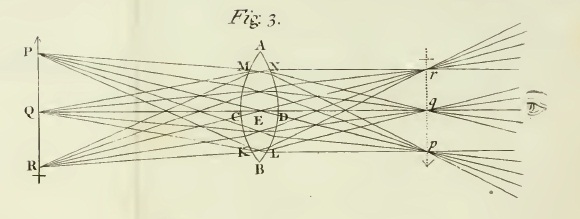
Making it up as he went along: Roger Fry and, right, H.M. Bateman's 1910 mocking cartoon "Post-Impressions of the Post-Impressionists" from The Bystander magazine
A century ago, an exhibition in London gave us the term post-impressionism. But who prompted Roger Fry to name it?
By Martin Bailey | From issue 219, December 2010
Published online 15 Dec 10 (News)
LONDON. “Post-impressionism” was a British invention, even if its artists worked mainly in France. A hundred years on, it still remains a mystery who helped art historian and artist Roger Fry devise the term. We can offer a few clues, and invite our readers to help solve the puzzle.
“Manet and the Post-Impressionists”, a show mounted by Fry, opened at London’s Grafton Galleries on 8 November 1910. For the first time a significant number of works by Van Gogh and Gauguin were shown in London.
The exhibition caused a sensation. The majority of critics and the public derided the paintings, but some fell in love with modern art. Referring to the show’s impact over the following weeks, Virginia Woolf later famously wrote that “on or about December 1910, human character changed”. Britain was finally succumbing to the wave of modernism that had been sweeping across Europe.
The irony is that Fry was only invited at the last minute to fill a gap in the programme of the Grafton Galleries. The story of the title only emerged in 1945, when exhibition secretary Desmond MacCarthy recalled: “What was the exhibition to be called? … Roger [Fry] and I and a young journalist who was to help us with publicity met to consider this, and it was at that meeting that a word which is now safely embedded in the English language—‘post-impressionism’—was invented. Roger first suggested various terms like ‘expressionism’, which aimed at distinguishing these artists from the impressionists; but the journalist wouldn’t have that or any other of his alternatives. At last Roger, losing patience, said: ‘Oh, let’s just call them the post-impressionists; at any rate, they came after the impressionists.’”
So who was the journalist who acted as the catalyst at the birth of “post-impressionism”? He was young, presumably in his 20s (and was almost certainly male).
The journalist might have been a critic who published a review, but there were a relatively small number of favourable pieces, notably by Lewis Hind, Holbrook Jackson and Frank Rutter, who were all in their 30s or 40s. Rutter used the term in an article on 14 October 1910, but aged 34 he was not really young.
Another possibility is that the “journalist” could have also been a general assistant at the Grafton Galleries. The Van Gogh Museum archive has a handwritten letter from someone working under Fry, which appears to be signed “F. Wolston” (although the signature is not entirely clear). Nothing further is known about him, but could he have been the person who “helped with publicity”?
What comes as a surprise is that the journalist never went on to write about his own role, considering the historic importance which the exhibition later assumed. This suggests that he might have been killed in the first world war, which broke out less than four years later.
The exhibition generated over 50 reviews, and 25,000 visitors flocked to the Grafton Galleries, an astonishing number for a commercial space. Whoever masterminded publicity for “Manet and the Post-Impressionists” succeeded beyond their wildest dreams.
And still they come…
One hundred years on, the post-impressionists continue to pull in the crowds. This year in London the two most popular shows, in terms of visitor numbers, look set to be “The Real Van Gogh: the Artist and his Letters” at the Royal Academy (23 January-18 April) and “Gauguin: Maker of Myth” at Tate Modern (30 September-16 January 2011). Van Gogh had 411,000, and although Gauguin has six more weeks to run it is likely to end up with well over 350,000. It may be a close-run race.

No hay comentarios:
Publicar un comentario